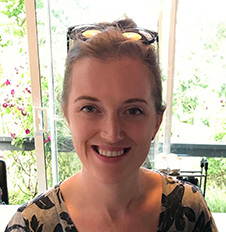 Assistant Professor
Assistant ProfessorDepartment Biological Sciences, Brain Health Research Institute
Kent State University
Kent, Ohio, USA
“I began my career as an honors and Ph.D. student in Dr. Rebecca Campbell's laboratory within the Department of Physiology and Center for Neuroendocrinology (CNE) at the University of Otago (Dunedin, New Zealand). In Dr. Campbell's lab, we studied neuronal circuits in the brain that regulate gonadotrophin-releasing hormone (GnRH) neurons, the final output cells that control fertility. My project focused on how changes within the GnRH neuronal network lead to polycystic ovarian syndrome (PCOS), the most common cause of infertility affecting women worldwide. During this period, I characterized a now widely used mouse model of PCOS and identified alterations in a novel GABAergic input to GnRH neurons that potentially contributes towards the development of the syndrome. I thoroughly enjoyed my doctoral experience in the Department of Physiology and CNE, which was a highly supportive and motivating environment for learning and research. My Ph.D. provided the opportunity to work with world leaders in physiological and neuroendocrine research, and the members of my laboratory became like a second family. In academic research, I valued that I could chase exciting discoveries at the forefront of neuroscience and was motivated by the knowledge that my findings could contribute to the understanding and prevention of human diseases. Therefore, I decided to continue my career in academic research with the aim of running an independent research program studying the central control of fertility.
“I joined the laboratories of Dr. Michael Lehman and Dr. Lique Coolen as a postdoctoral fellow at the University of Mississippi Medical Center in the United States. During this period, I developed optical tissue clearing methods to study the three-dimensional morphology of intact neuronal circuits in multiple animal models, including the mouse, rat, sheep, and primate. My postdoctoral position provided the mentorship and opportunity to expand my biological and technical skills, travel and meet international experts in my field, and participate in developing the national and international reproductive neuroendocrinology community. During this period, I established an independent research program investigating the regulation of fertility by a population of cells in the brain that co-express the neuropeptides Kisspeptin, Neurokinin B, and Dynorphin (termed KNDy neurons). I received an American Association of Anatomists Postdoctoral Fellowship and a National Institutes of Health (NIH) K99/R00 career development grant to support this research. I have now established my own laboratory as an Assistant Professor in the Department of Biological Sciences and the Brain Health Research Institute at Kent State University in Ohio. My new role gives me the creative freedom to design and perform scientific research that will further our understanding of the central control of fertility and provide the basis for successful preventative and interventional therapies to treat infertility worldwide. I am also part of a larger team that fosters and supports research and collaboration across academic and medical institutes in the greater Cleveland region. Significantly, as an educator, I have the privilege of helping equip the next generation of students and researchers with the experience, knowledge, and intellectual independence that can accelerate their own careers in STEM.”